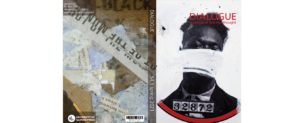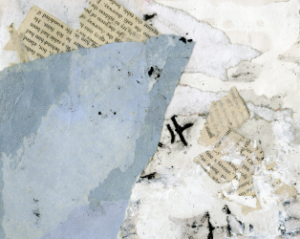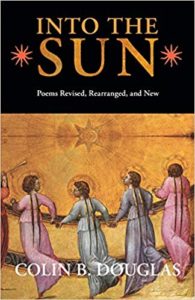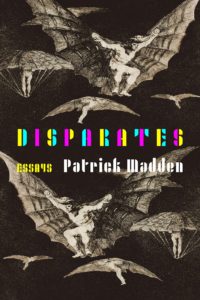
The Spring 2021 issue of Dialogue: A Journal of Mormon Thought is now available, and it is full of great literature and book reviews. Also, a new episode of the Dialogue Book Report Podcast is available, with discussions of recent LDS creative nonfiction and poetry.
Besides the scholarly articles and art, this Spring 2021 issue includes work by five personal essayists, three poets, and two fiction authors, including an excerpt and translation from a remarkable Spanish-language novel from Mexico. Also, a review of many recent poetry collections.
 R. de la Lanza’s novel Eleusis: The Long and Winding Road, was published in Spanish in 2017. James Goldberg translated the first two chapters, which is published in this issue, along with the original Spanish version of those chapters. The first chapter tells the story of Luz Maria, an early 20th century convert to the Church, and then second is focused on her grandson, Moroni, who is living a rootless existence away from the Church and his family, setting a pattern of alternate chapters of historical and contemporary settings. In the translator’s introduction, Goldberg says,
R. de la Lanza’s novel Eleusis: The Long and Winding Road, was published in Spanish in 2017. James Goldberg translated the first two chapters, which is published in this issue, along with the original Spanish version of those chapters. The first chapter tells the story of Luz Maria, an early 20th century convert to the Church, and then second is focused on her grandson, Moroni, who is living a rootless existence away from the Church and his family, setting a pattern of alternate chapters of historical and contemporary settings. In the translator’s introduction, Goldberg says,
Eleusis ranks among the most ambitious novels in Mormon literary history. Weaving together the tales of two multi-generational sets of Mormon characters, the novel embraces the grand sweep of Mexico’s Mormon history. There’s a cameo by Melitón González Trejo, a depiction of the divisions around the schismatic Third Convention, friendships formed at the Benemérito academy. Through it all, de la Lanza shows a consistent interest in both the earthy, messy realities of his characters’ lives and the spiritual longings that pull at them, no matter how they may drift from their principles. The novel’s name, a reference to the ancient Greek Eleusinian Mysteries, promises a sacred story of descent and ascent. With the help of classical and scriptural allusions, R. de la Lanza keeps that promise, inviting us to take a look at the long and winding road through mortality to transcendence.
The second piece of fiction is “Confession“, by Sylvette Wolfe. It is told as a monologue by a woman called into a bishop’s office to explain her marital infidelities. The bishop gets more of a story than he bargained for. Wolfe does not offer an author biographical blurb.
 J. S. Absher, a veteran poet trained in eighteenth-century English literature, provides three poems. “Until You Come” tells of the author’s experiences seeing desperation in Taipei and earlier in France as a missionary, and looking forward to the Lord’s coming, where he will both break down and heal. A strong poem! His next two poems, “Praying on Gravel” and “Grasshoppers in the Jar of the World”, both use tercets (three-line stanzas).
J. S. Absher, a veteran poet trained in eighteenth-century English literature, provides three poems. “Until You Come” tells of the author’s experiences seeing desperation in Taipei and earlier in France as a missionary, and looking forward to the Lord’s coming, where he will both break down and heal. A strong poem! His next two poems, “Praying on Gravel” and “Grasshoppers in the Jar of the World”, both use tercets (three-line stanzas).
BYU student A. I. Christensen’s “Parousia” (presence, arrival, second coming?), like “Until You Come”, hints at expectation or hope for transcendence. My favorite of the group is Kyle Bond’s “Matriarchal Blessing”, in which an adult child contemplates how his mother had blessed and served him and others.
 Among the personal essays are Linda Hoffman Kimball’s “Assuming Power“, about her childhood in a Protestant family that practiced gender equality and charitable living, her conversion to the Church near the end of high school, and her experiences with the feminist women who founded Exponent II in the 1970s. In “Called Not to Serve“, Neal David Sylvester discussed his bipolar condition and the medicine that cleared his mind, the decision not to serve a mission, and how his condition both drives his desire to write literature and potentially can lead him into delusions of grandeur. John Gustav-Wrathall, a former president of the LDS LGBTQ group Affirmation, tells his story of coming to accept his homosexuality, requesting to leave the Church, and the spiritual connection he continues to find with God, in “Excommunication and Finding Wholeness.” Lisa Paulson tells a wrenching story of despair of ever finding love within her Mormon community, and personal tragedy, in “The Complementarity Principle.” Marie Blanchard investigates a great-grandmother’s mysterious death and a family history of mental issues, which lead her on a path to become a psychoanalyst in “Finding Rebecca” A Eulogy.”
Among the personal essays are Linda Hoffman Kimball’s “Assuming Power“, about her childhood in a Protestant family that practiced gender equality and charitable living, her conversion to the Church near the end of high school, and her experiences with the feminist women who founded Exponent II in the 1970s. In “Called Not to Serve“, Neal David Sylvester discussed his bipolar condition and the medicine that cleared his mind, the decision not to serve a mission, and how his condition both drives his desire to write literature and potentially can lead him into delusions of grandeur. John Gustav-Wrathall, a former president of the LDS LGBTQ group Affirmation, tells his story of coming to accept his homosexuality, requesting to leave the Church, and the spiritual connection he continues to find with God, in “Excommunication and Finding Wholeness.” Lisa Paulson tells a wrenching story of despair of ever finding love within her Mormon community, and personal tragedy, in “The Complementarity Principle.” Marie Blanchard investigates a great-grandmother’s mysterious death and a family history of mental issues, which lead her on a path to become a psychoanalyst in “Finding Rebecca” A Eulogy.”
The front and back covers were created by Marlena Marie Wilding, and there is an art note by Darron T. Smith, which starts with an appreciation of Wilding’s work, and then expands into “The Mask We Must Wear in a Racist Society: Reflections of Black Suffering in the LDS Church Through Art.”
 There is one literary book review, Theric Jepson’s “Recent Collections, in Three Movements“, an extended essay on recent poetry, including: R.A. Christmas’ Leaves of Sass, Colin B. Douglas’ Into the Sun: Poems Revised, Rearranged, and New, Jan G. Otterstrom’s Move On, Kate Piersanti’s Life in Poetry, Sunni Brown Wilkinson’s The Marriage of the Moon and the Field and Michael Lavers’ After Earth, and Dayna Patterson’s If Mother Braids a Waterfall and Titania in Yellow. Eric not only explores the style and content of the poems, he also discusses the state of poetry among Mormon authors, including the different approaches each takes to finding and connecting with audience in a world with limited venues for publication.
There is one literary book review, Theric Jepson’s “Recent Collections, in Three Movements“, an extended essay on recent poetry, including: R.A. Christmas’ Leaves of Sass, Colin B. Douglas’ Into the Sun: Poems Revised, Rearranged, and New, Jan G. Otterstrom’s Move On, Kate Piersanti’s Life in Poetry, Sunni Brown Wilkinson’s The Marriage of the Moon and the Field and Michael Lavers’ After Earth, and Dayna Patterson’s If Mother Braids a Waterfall and Titania in Yellow. Eric not only explores the style and content of the poems, he also discusses the state of poetry among Mormon authors, including the different approaches each takes to finding and connecting with audience in a world with limited venues for publication.
There are also book reviews of Joanna Brooks’ Mormonism and White Supremacy, Terryl Givens with Brian M. Hauglid’s The Pearl of Greatest Price: Mormonism’s Most Controversial Scripture, Benjamin E. Park’s Kingdom of Nauvoo, and Matthew L. Harris’ Thunder from the Right: Ezra Taft Benson in Mormonism and Politics.
 My Dialogue Book Report Podcast, #10 has two segments, a discussion between Christopher Angulo, Lisa Van Ordam Hadley, and Adam McLain on the many LDS-related creative nonfiction books (memoirs and essay collections) published in 2020, and a conversation between Irreantum editor Theric Jepson and I about recent Mormon poetry collections, including and going beyond the works discussed in his book review. We also discuss recent issues of the literary journal Irreantum and other Mormon literature.
My Dialogue Book Report Podcast, #10 has two segments, a discussion between Christopher Angulo, Lisa Van Ordam Hadley, and Adam McLain on the many LDS-related creative nonfiction books (memoirs and essay collections) published in 2020, and a conversation between Irreantum editor Theric Jepson and I about recent Mormon poetry collections, including and going beyond the works discussed in his book review. We also discuss recent issues of the literary journal Irreantum and other Mormon literature.
Creative fiction works discussed:
Christopher Bigelow. Acid Test: LSD vs. LDS
Charlie Bird. Without the Mask
Ann Chamberlin, Clogs and Shawls: Mormons, Moorlands, and the Search for Zion
Joey Franklin. Delusions of Grandeur
Eric Freeze. French Dive: Living More with Less in the South of France
Carol R. Gray. Miracles Among the Rubble: Bringing Conveys of Humanitarian Aid, Hugs, and Hope to a War-torn Region
Patrick Madden. Disparates
Caitlin Myer. Wiving: A Memoir of Loving Then Leaving the Patriarchy
Maleah Day Warner. Lies of the Magpie: A Memoir
Association for Mormon Letters 2020 Creative Nonfiction Award Finalists
Poetry works discussed:
Darlene Young. Homespun and Angel Feathers
R.A. Christmas. Leaves of Sass
Colin B. Douglas. Into the Sun: Poems Revised, Rearranged, and New
Gabriel González Núñez. Ese golpe de luz
Michael Lavers. After Earth
Dayna Patterson. If Mother Braids a Waterfall
Dayna Patterson. Titania in Yellow
Sunni Brown Wilkinson. The Marriage of the Moon and the Field
Dove Song: Heavenly Mother in Mormon Poetry edited by Tyler Chadwick, Dayna Patterson, Martin Pulido
Association for Mormon Letters 2020 Poetry Award Finalists
Association for Mormon Letters 2019 Poetry Award Finalists
Irreantum (Mormon literary journal)
A Desolating Sickness: Stories of Pandemic. An exhibit at the BYU library.
2021 Association for Mormon Letters Online Conference, June 1-5

.
I’m very excited to get my issue. Some fascinating new voices to discover~